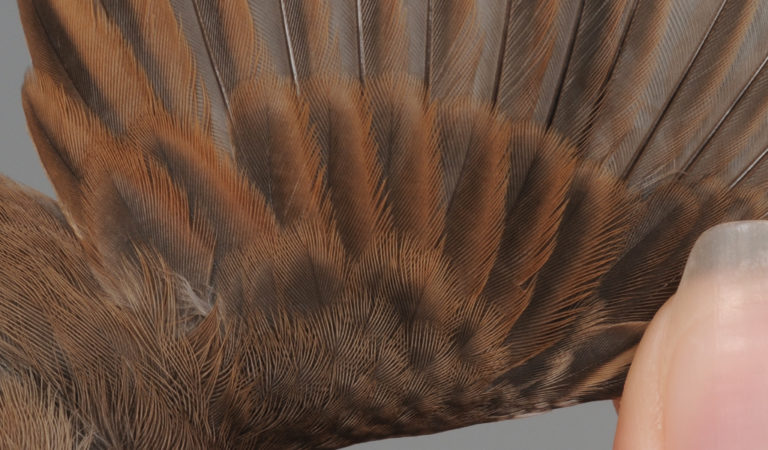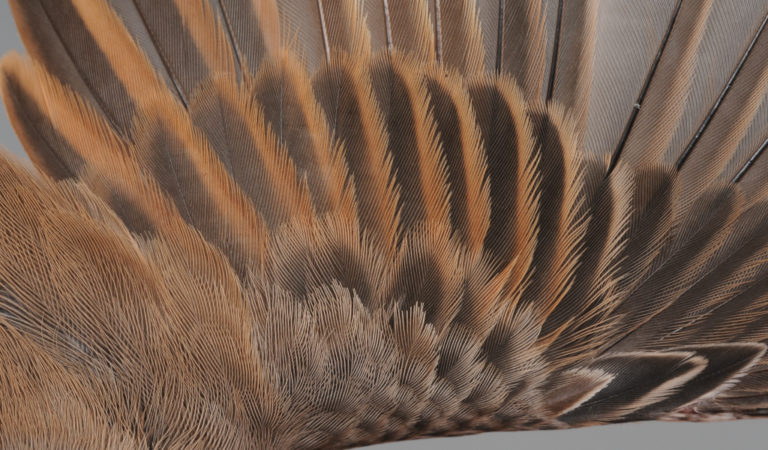

Common Whitethroat
AGE – BEST CRITERIA:

1cy August. A typical young bird showing moulted post-juvenile inner GC9-10 that are fresh, dense and show vividly rufous edges in rather sharp comtrast to the dark (blackish) centre. In contrast, the juvenile outer GC1-8 show slightly paler buffish-rufous edges, more diffusely set of to the dark grey centre. [1ES24983]

1cy August. A few young birds are slightly darker with little difference in the colour of GC edges between post-juvenile and juvenile feathers. Here, GC 9-10 are recognized as post-juvenile by the more dense struture and sharper contrast between the eadge and the dark centre than the juvenile GC1-6 (GC7 is missing). [1ET29939]

2cy+ (male) August, showing rather typical post-breeding GC with distinct pattern. Perhaps not seen here, but some birds exhibit inner GC that differ slightly in pattern (a 'false contrast'), and the structure of the feathers should therefor be examined. Note that this bird have suspended it's moult and still shows some worn pre-breeding LC and innermost AL. [1ET80074]
More Sylvia communis:
Sexing autumn
Ageing spring
Sexing spring
Moult
Ringers’ DigiGuide is sponsored by: